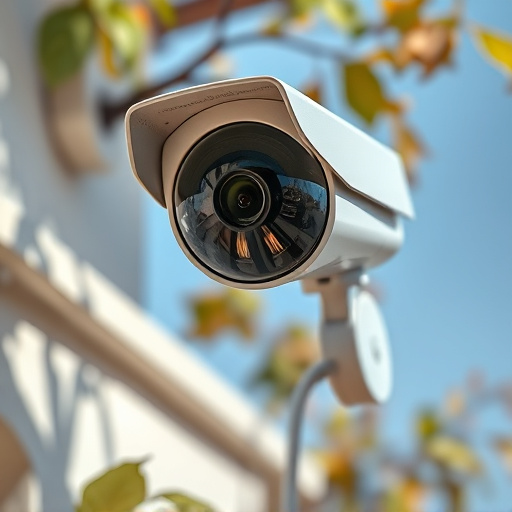Strategically install multiple fake security cameras at varying heights (2-10 feet) and angles to deter threats. Place them above windows/doors in homes, near entry points in businesses, considering field of view & environmental factors for optimal coverage while adhering to local privacy laws.
“Enhance your home or business security with our comprehensive guide on fake security camera mounting heights. Understanding where to place these devices is key to effective surveillance, especially when combining multiple cameras for comprehensive coverage. We’ll explore optimal heights for various zones and factors influencing mounting positions. Learn about legal considerations and privacy tips when installing multiple fake security cameras, ensuring a robust yet discreet security system.”
- Understanding Fake Camera Placement
- Optimal Heights for Different Zones
- Factors Affecting Mounting Positions
- Combining Cameras for Comprehensive Coverage
- Legal Considerations and Privacy Tips
Understanding Fake Camera Placement
Understanding where to place fake security cameras is crucial for enhancing home or business security, especially when paired with real cameras in a strategic installation plan. When considering installing multiple fake cameras, it’s important to think about their placement in relation to each other and to genuine surveillance equipment. The goal isn’t to fool every intruder, but to create an environment where potential threats are deterred by the presence of active security measures.
Fake cameras should be positioned at various heights and angles to mimic a comprehensive monitoring system. Installing them on walls, ceilings, or even on posts in outdoor areas can help cover blind spots. In residential settings, placing fake cameras above windows or near doors can act as a powerful deterrent, while in commercial spaces, strategic positioning near high-value assets or entry points can significantly improve security measures.
Optimal Heights for Different Zones
When considering optimal heights for different zones while installing multiple fake security cameras, it’s crucial to understand that placement plays a significant role in enhancing surveillance effectiveness. For entry points like doors and windows, mount cameras at approximately 2-3 feet (60-90 cm) above eye level. This height ensures clear views of approaching individuals while maintaining a relatively unobtrusive presence.
In interior spaces, such as corridors or hallways, positioning cameras at 5-7 feet (1.5-2.1 meters) can provide comprehensive coverage. This range offers a balanced perspective, capturing not just headshots but also body language and movements without invading privacy. For rooftops or elevated areas, consider mounting cameras higher, around 8-10 feet (2.4-3 meters), to capture a broader field of view and deter potential criminals from below. Installing multiple fake security cameras at these strategic heights can create an effective deterrent and significantly improve overall security measures.
Factors Affecting Mounting Positions
When considering the optimal mounting position for fake security cameras, several factors come into play. Installing multiple cameras requires strategic placement to ensure comprehensive coverage. Key considerations include field of view – the wider the angle, the more area each camera can monitor. Height is equally vital; positioning them at eye level or slightly elevated helps capture clear images while deterring potential intruders.
Environmental factors like lighting conditions and obstructions such as trees or signage also impact camera placement. Additionally, mounting height should consider the types of installations – whether on walls, ceilings, or poles – to ensure stability and avoid obstruction of the camera lens. These factors collectively determine the effectiveness of a security system, making them crucial in achieving optimal results when installing multiple fake security cameras.
Combining Cameras for Comprehensive Coverage
Combining multiple fake security cameras is a strategic approach to achieving comprehensive coverage for your property’s security. By installing several cameras at different heights and angles, you create an intricate network that reduces blind spots and enhances overall surveillance. This method is particularly effective for larger properties or areas with complex layouts.
When setting up installed multiple fake security cameras, consider placement strategies like tri-angular positioning to ensure complete visibility. Each camera should complement the others, providing a seamless and robust security system. This combination not only offers better protection but also acts as a powerful deterrent against potential intruders.
Legal Considerations and Privacy Tips
When installing multiple fake security cameras, it’s crucial to understand legal considerations and privacy tips. Different jurisdictions have varying laws regarding surveillance, so it’s essential to check local regulations before setting up any camera system. Additionally, even though fake cameras are designed to deter crime, they can still raise privacy concerns. To address these, consider placing signs clearly indicating the presence of surveillance equipment and positioning cameras in areas where there’s a reasonable expectation of privacy, such as away from windows or private entrances. This balance between security and privacy ensures compliance with legal requirements while maintaining a safe environment.
When considering an effective home security system, strategically placing fake security cameras can significantly deter potential intruders. By understanding the optimal mounting heights for different zones, accounting for factors that affect camera positions, and combining multiple cameras for comprehensive coverage, homeowners can enhance their security. Additionally, navigating legal considerations and privacy tips ensures a responsible approach to utilizing these devices. Installing multiple fake security cameras in strategic locations can provide peace of mind and add an extra layer of protection, acting as both a deterrent and a powerful tool for home security.
